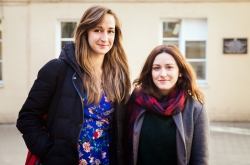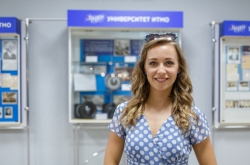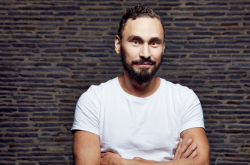Mr. van der Heide has been working as a lighting designer for more than 20 years. He has developed many famous lighting projects for buildings, bridges, interiors of museums, contemporary sculptures, sport and entertainment. Currently Rogier van der Heide serves as the vice president of Philips and its' chief designer.
One of the projects that he once saw made him turn his hobby into the occupation. It was a building located in London, the rooms of which were lit with mostly blue and orange — these colors are opposite and have different density and intensity. By passing through blue and orange rooms, the visitors adjusted themselves to the new conditions and felt in different ways. This solution made him appreciate challenging and unexpected ideas.
«I want you to be curious. Match the things that seems impossible to be connected, don’t be afraid of experiments. A successful designer is a person who knows when it is reasonable.»
In the early 2000-ss Rogier van der Heide created the lighting for Sheikh Zayed Bridge, which is 900 meters in length. Its' pillars look like giant waves that embody sand drifts. The highest of these waves is about 60 meters from the water surface.

«We wanted not only to light the bridge, but also share its' history. It aims to unite people and connect their country with new undiscovered lands. That is why we wanted to endow the bridge with specific energy. We created the unique idea that was never used before — made an animation, which provokes the illusion of waves' moving one by one. Dark colors were at the foundation while bright were at the top. It made the image look like 3D.»
Before that Mr. Van der Heide together with his team made the model of the bridge so as to show the customers how it would look like and work. Furthermore, they needed to take into account cultural peculiarities of United Arab Emirates where they worked.
Apart from art appreciation lighting designers have to understand how lighting technologies work. This skill includes the knowledge of fundamental physics and chemistry in order to choose the correct way of lighting.
For example, Mr. Van der Heide developed the project for California Academy of Science. To light its' room where coral hydranths grew the team of designers needed to study water’s optical properties and photosynthesis processes. They used light refraction to create the project of the roof, which transmits the necessary amount of light beams.

«Become more and more smart. Never stop learning. I recommend you to save your good ideas even if you don’t know what technologies used to create them. Sometimes you need some patience and time to look for them,» commented the expert.
Mr. Van der Heide put this strategy to use when started working on a project for Galleria West, a shopping mall in Seoul. It was an ex industrial building that looked like a large single-tone box. Inspired by glass bottles that can reflect all colors of the spectrum he made several experiments and then covered the mall’s walls with LED lamps that render millions colors. The lamps were covered with glass plates that served as «pixels» for this large screen. Currently lighting design meets not only aesthetic purposes. It affects other fields more and more. The correct lighting helps to grow plants indoors, provide specific therapies for good sleeping and stress reduction.

Mr. Van der Heide commented on various approaches to urban lighting in different countries. Answering the question about St. Petersburg, the expert appreciated the idea of monuments' lighting. However he noted that lighting solutions in St. Petersburg and Moscow are full of high contrasts that make buildings' appearance less clear and destroy the light-shade balance.
«To work with lighting design, one has to know how to appreciate darkness. Harmony is what’s essential when you create it», — concluded the expert.




